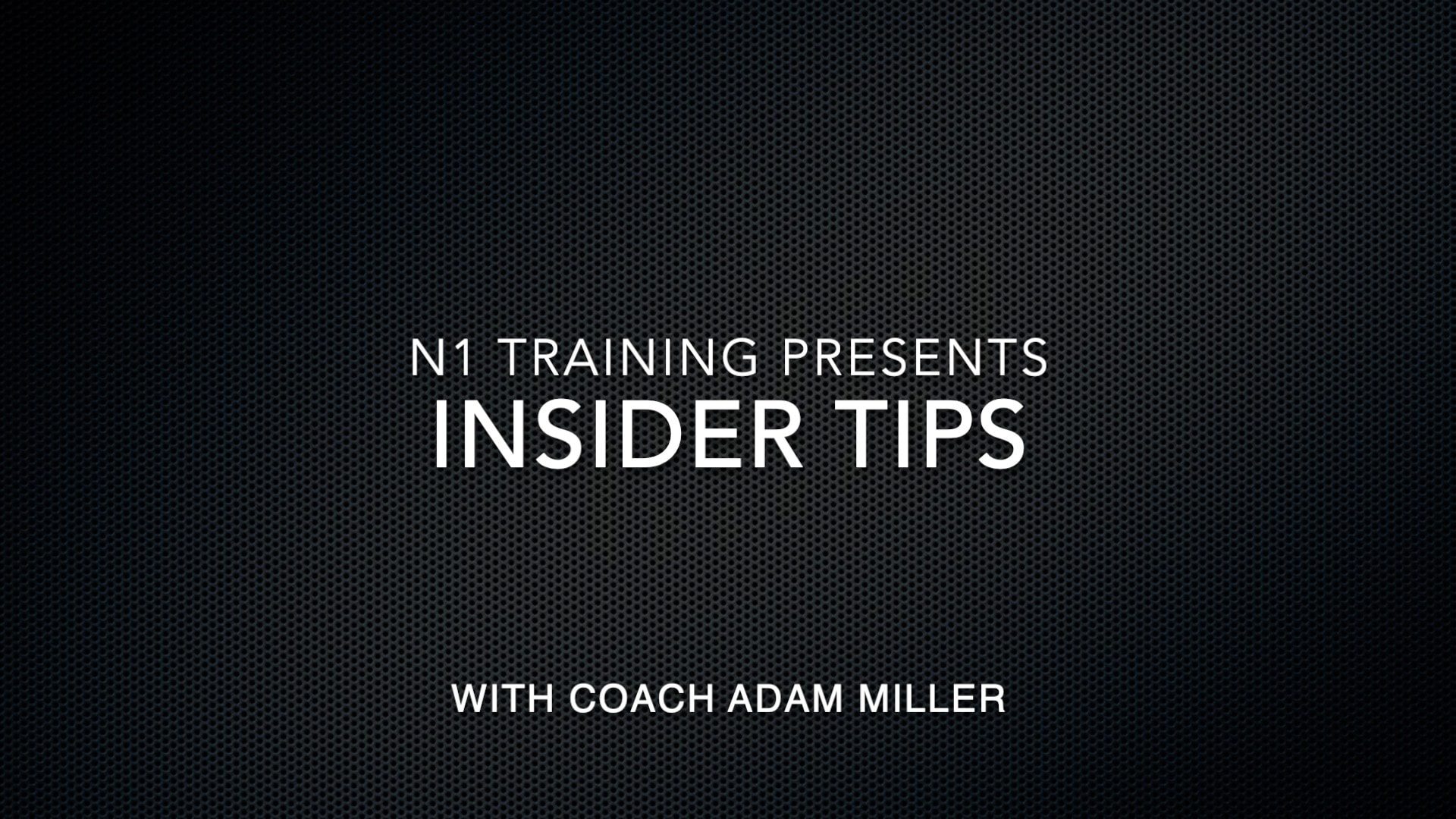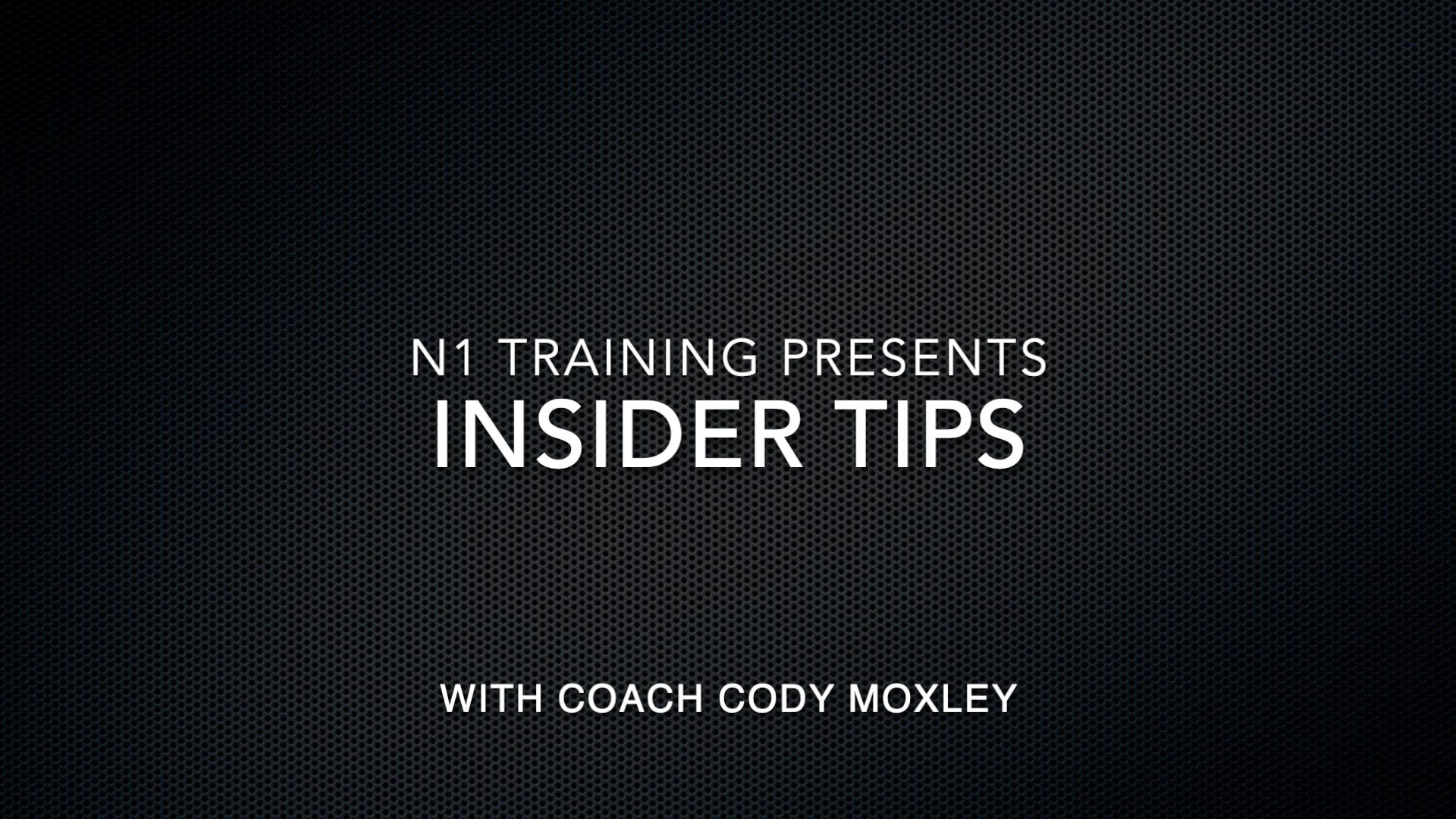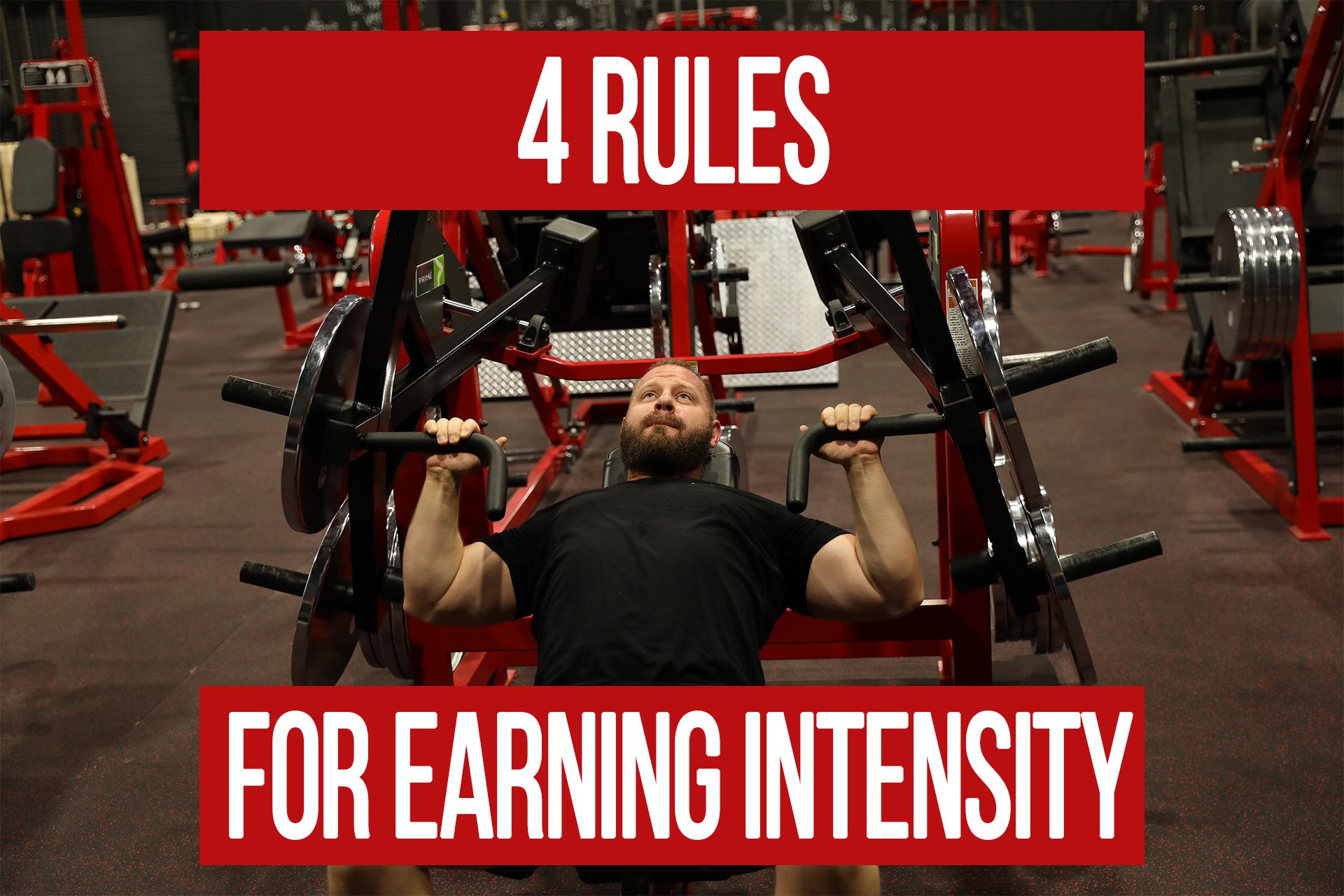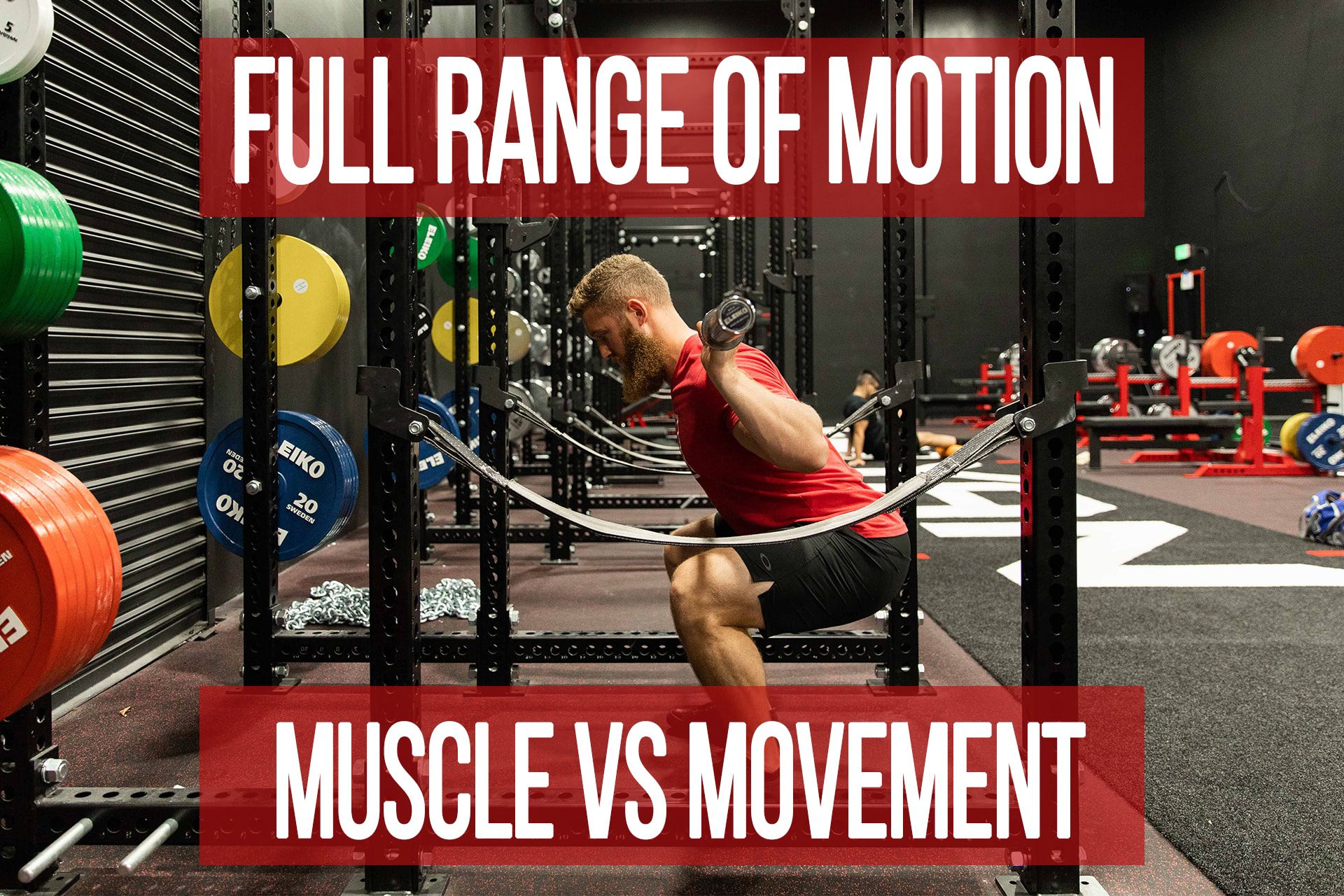The Truth About Exercise Preparation
n1 training
In order to effectively prepare your body for resistance training there are only three main things we need to look at. All three of them are related to the nervous system. None of the things required for preparing for exercise involve passive stretching, contortionist drills, or circus tricks.
Preparing for Exercise Essential #1 Neurological Intensity
The first thing we need to prepare for exercise is the ability of our nervous system to produce intense contractions of the musculature we are intending to train.
You need to stimulate the muscle tissue through tension to start getting the neurons firing faster and neurotransmitters flowing. The nervous system is not ready to fire at 100% at a moments notice. It needs a stimulus to start increasing its firing rate to be able to produce more intense contractions. We refer to this as potentiation.
It’s like jumping in your car after it’s been parked all night. The engine is cold and not ready for you drag race (which is basically what you’re doing in a high intensity workout as far as your nervous system is concerned). You need to turn the car on, let it idle for a bit and then start revving the engine to get it warmed up before you’re ready to floor it.
One simple and safe way to potentiate your nervous system to contract the muscles you’re about to train is to perform an isometronic in a stable exercise. This entails choosing a weight that you cannot fully complete the rep so that you get “stuck” near the end of the movement and contracting as hard as you can for 4-6 seconds.
Learn more about the difference between isometrics & isometronics in THIS ARTICLE.
Another way is simply to perform practice reps of the exercise you’re about to perform and gradually increase the load. You may even “warm up” to a load above your working set weight but with much lower reps. For example, you’ll be training with sets of 8-10 but only doing 3-4 reps on each warm up set and maybe only 1 rep of a load heavier than your working weight.
You don’t have to do this for every exercise. Usually just the first exercise for a particular muscle will do. More practice sets are usually required for more complex lifts like squats and deadlifts while you might only need 1-2 for simpler ones like curls or flys. Keep in mind, the lower your working rep range will be the more practice sets you’ll likely need.
It is also perfectly acceptable to perform both methods. Start with an isometronic (1 rep) and then begin your practice sets. You’ll just be able to start with a bit heavier load for your first practice set.
This second method also leads into the next point in preparing for intense exercise.
Preparing for Exercise Essential #2 Neurological Coordination
The second thing that is important for preparing for exercise is the motor pattern for the movement(s) you’re about to perform. This is as simple as starting with a load lighter than your working sets that won’t cause fatigue but will allow you to practice the movement perfectly.
The best “warm up” exercise is the one you’re about to do. Give your nervous system a few reps to prepare to perform the motor pattern under load. If you’ve been sitting at your desk all day, do you think your nervous system is ready for its next task to be squatting heavy loads? No it’s not.
This also kills two birds with one stone as it takes care of the third step.
Preparing for Exercise Essential #3 Hormones & Increasing Blood Flow
This is related to the increase of sympathetic nervous system dominance, which is why I mentioned that all three of these things have to do with the nervous system.
Increasing local blood flow not only will improve nutrient delivery during training but assist in the clearing of any metabolic waste, depending on what type of workouts you’re doing.
Going through your practice sets will begin elevating hormones like cortisol and catecholamines (epinephrine and norepinephrine) which will not only assist in releasing stored fatty acids to be used as fuel, but can temporarily improve mental focus and drive for those tough sets. These are necessary for high intensity training. Diving into their mechanisms will be a topic for another piece of content. Just know that you should not be overly concerned about an acute elevation of cortisol during training as it is natural and necessary.
Summary
So do you see where stretching, mobility drills, treadmills, and spin bikes fit in? No? Good, me neither.
That is not to say those things can’t have a use, but it is not for the purpose of preparing for intense resistance training.
Instead, when preparing for exercise focus on the points and recommendations above to prepare your nervous system to perform at its best during your sessions.
In order to effectively prepare your body for resistance training there are only three main things we need to look at. All three of them are related to the nervous system. None of them involve passive stretching, contortionist drills, or circus tricks.
Neurological Intensity
The first thing we need to prepare is the ability of our nervous system to produce intense contractions of the musculature we are intending to train.
You need to stimulate the muscle tissue through tension to start getting the neurons firing faster and neurotransmitters flowing. The nervous system is not ready to fire at 100% at a moments notice. It needs a stimulus to start increasing its firing rate to be able to produce more intense contractions. We refer to this as potentiation.
It’s like jumping in your car after it’s been parked all night. The engine is cold and not ready for you drag race (which is basically what you’re doing in a high intensity workout as far as your nervous system is concerned). You need to turn the car on, let it idle for a bit and then start revving the engine to get it warmed up before you’re ready to floor it.
One simple and safe way to potentiate your nervous system to contract the muscles you’re about to train is to perform an isometronic in a stable exercise. This entails choosing a weight that you cannot fully complete the rep so that you get “stuck” near the end of the movement and contracting as hard as you can for 4-6 seconds.
Learn more about the difference between isometrics & isometronics in THIS ARTICLE.
Another way is simply to perform practice reps of the exercise you’re about to perform and gradually increase the load. You may even “warm up” to a load above your working set weight but with much lower reps. For example, you’ll be training with sets of 8-10 but only doing 3-4 reps on each warm up set and maybe only 1 rep of a load heavier than your working weight.
You don’t have to do this for every exercise. Usually just the first exercise for a particular muscle will do. More practice sets are usually required for more complex lifts like squats and deadlifts while you might only need 1-2 for simpler ones like curls or extensions. Keep in mind, the lower your working rep range will be the more practice sets you may need.
It is also perfectly acceptable to perform both methods. Start with an isometronic (1 rep) and then begin your practice sets. You just might be able to start with a bit heavier load for your first practice set.
This second method also leads into the next point in preparing for intense exercise.
Neurological Coordination
The second thing we need to prepare is the motor pattern for the movement(s) you’re about to perform. This is as simple as starting with a load lighter than your working sets that won’t cause fatigue but will allow you to practice the movement perfectly.
The best “warm up” exercise is the one you’re about to do. Give your nervous system a few reps to prepare to perform the motor pattern under load. If you’ve been sitting at your desk all day, do you think your nervous system is ready for its next task to be squatting heavy loads? No it’s not.
This also kills two birds with one stone as it takes care of the third step.
Hormones & Increasing Blood Flow
This is related to the increase of sympathetic nervous system dominance, which is why I mentioned that all three of these things have to do with the nervous system.
Increasing local blood flow not only will improve nutrient delivery during training but assist in the clearing of any metabolic waste, depending on what type of workouts you’re doing.
Going through your practice sets will begin elevating hormones like cortisol and catecholamines (epinephrine and norepinephrine) which will not only assist in releasing stored fatty acids to be used as fuel, but can temporarily improve mental focus and drive for those tough sets.
These are necessary for high intensity training. Diving into their mechanisms will be a topic for another piece of content. Just know that you should not be overly concerned about an acute elevation of cortisol during training as it is natural and necessary.
Summary
Do you see where stretching, mobility drills, and bosu balls fit in? No? Good, me neither.
That is not to say those things can’t have an application, but it is not for the purpose of preparing for intense resistance training.
Instead, focus on the points and recommendations above to prepare your nervous system to perform at its best during your sessions.
Please Log In to Submit Your Question

Popular Pages
Learn & Train With Us
Add N1 Training to your Homescreen!

Please log in to access the menu.




